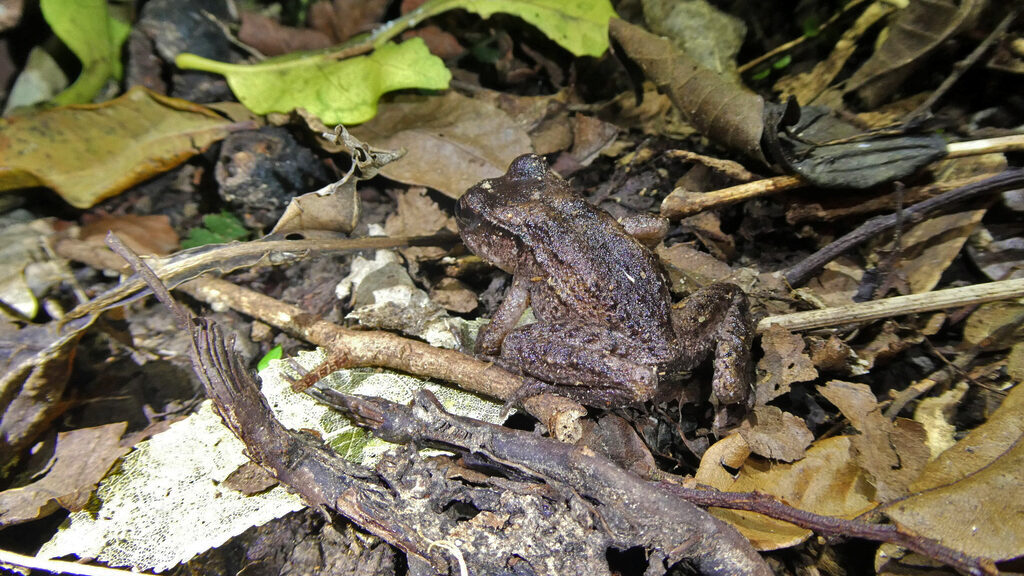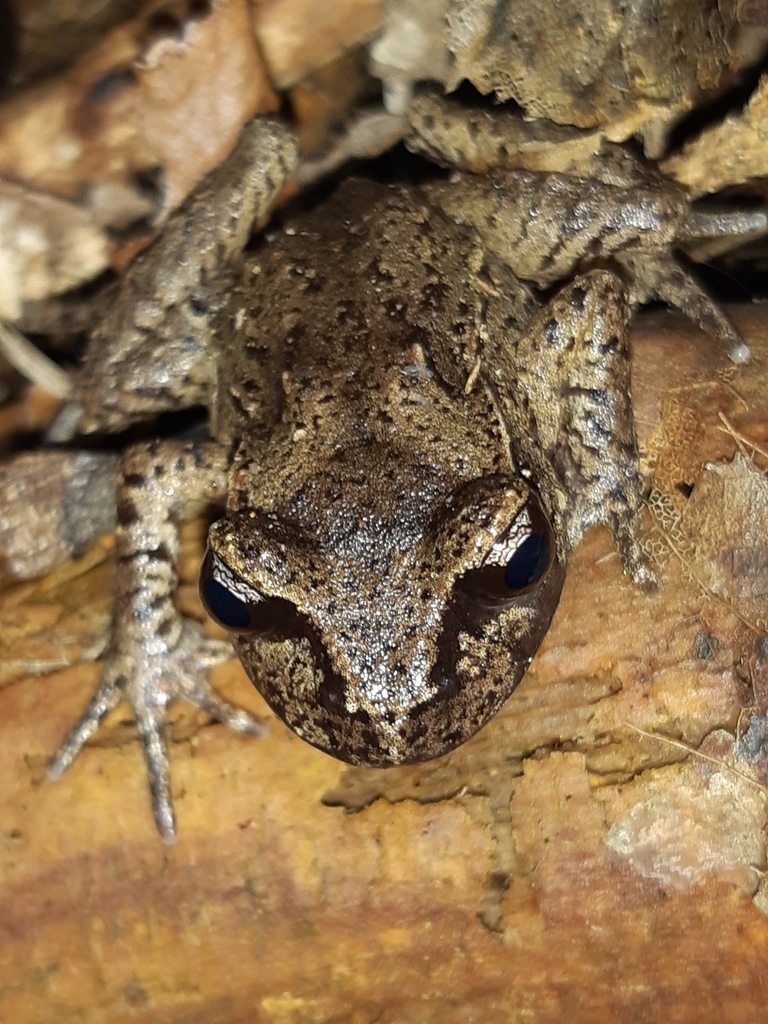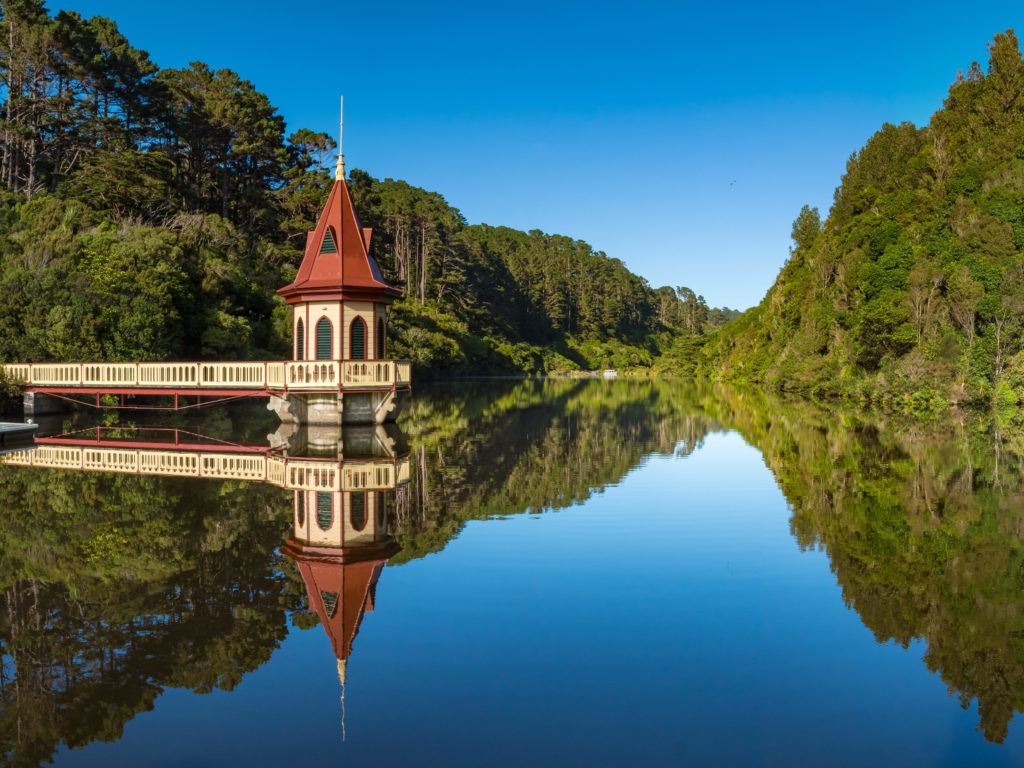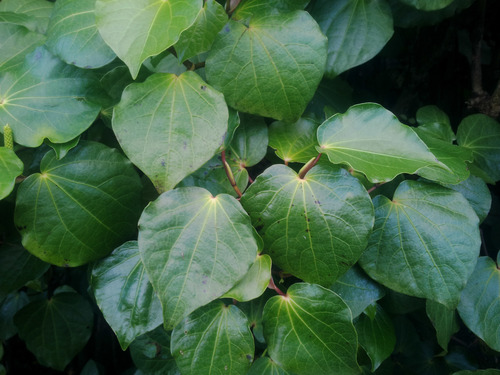It might be time to update the textbooks and webpages on the Maud Island frog. It seems our odd little endemic amphibian might not be quite as dedicated to a ground-hugging life as experts have believed.

An article recently published in the New Zealand Journal of Ecology shows how much we still have to learn about our unique and ancient frog species. It’s important – because the better we understand how our frogs interact with their environment, the better we can provide them with everything they need to breed and thrive.
Between 30–40 % of all amphibian species on Earth are threatened with extinction, making frogs and their relatives the most globally threatened vertebrate taxa on our planet.
“New Zealand has three endemic species of amphibian, all frogs within the genus Leiopelma (Leiopelma archeyi, L. hamiltoni, L. hochstetteri). Leiopelmatids are one of the most archaic lineages of frogs in the world, estimated to have diverged from other anurans roughly 200 million years ago,” the researchers write.
All three species are currently classified as Threatened under both the IUCN’s Red List and the New Zealand threat classification – and mammal predators as well as habitat loss have contributed to that status.
“One of the terrestrial species of leiopelmatids, the Maud Island frog (L. hamiltoni), was extirpated from the North and South Islands of New Zealand due to habitat alteration and introduced mammalian predators. Currently there remain only two remnant populations of Maud Island frogs on predator-free Stephens Island (Takapourewa) in the Cook Strait and Maud Island (Te Pākeka) in the Marlborough Sounds.”

Translocation to island sanctuaries has been used to increase the chances of species survival with populations moved to Motuara Island and Long Island, both in Queen Charlotte Sound. Then in 2006, the first translocation of Maud Island frogs to mainland New Zealand occurred at Zealandia Ecosanctuary. The Zealandia population is the only free-roaming population of Maud Island frogs on the New Zealand mainland and, being located in our capital city, the population is also more accessible to researchers. It’s a chance to get to know Maud Island frogs a little better
So what do we (think) we know about Maud Island frogs currently? Well, for a start, they can live for an incredible 43 years and they spend most of their long life in one small area of home range.
“Maud Island frogs are a long-lived (43+ years) and sedentary species of frog maintaining home ranges of 26.7 ± 2.2 square metres over multiple decades. Maud Island frogs are classically described as a terrestrial species observed to feed, eat, and mate, on or within rockpiles. As such, ideal restored habitat currently focuses on a complex ground environment free of mammalian predators.”
“For example, frog habitat restoration on Stephens Island consisted of excavating a 1.6 m deep pit, backfilling it with 15 tonne of rock, and then covering the pile with detritus. However, on Maud Island, frogs are primarily found in the only patch of remnant old-growth forest on the island, and anecdotal observations are often made of the frogs climbing trees. The purpose of this behaviour is still unknown, but the presence of arboreal habitat is not thought to be a primary requirement for this species’ persistence.”
Trees might not be essential for their survival – a pit filled with rocks seems to supply the basics – but given a chance, Maud Island frogs have been known to climb, which makes finding out more about the who/when/why of tree-climbing important if we want to offer them a more perfect home in future. After all, once they settle in their chosen 20 square metre patch, they may live there for several decades.
So is it just the occasional frog venturing up a tree or is it regular Maud Island frog behaviour? Zealandia’s population offered the researchers an ideal opportunity to investigate further.
“In early 2020, we undertook the first visual survey of a free-roaming Maud Island frog population at Zealandia Ecosanctuary since 2012. During this time, we observed frogs repeatedly using arboreal habitat and set up a trail camera to determine the frequency and extent of this use. Here, we (1) describe the arboreal behaviours repeatedly seen in the classically-terrestrial Maud Island frog and (2) make management recommendations in response to these new behaviours.”

A total of 60 Maud Island frogs were translocated into Zealandia Ecosanctuary, a 252 hectare predator-free restoration site in Wellington, in 2006.
“These frogs were divided into two groups with equal sex-ratios and placed into enclosures for close monitoring of reproduction and survival. In 2012, an additional 101 Maud Island frogs were translocated to the sanctuary and placed inside a little spotted kiwi exclusion fence surrounding one of the enclosures. The frogs within this kiwi exclusion fence are herein referred to as the free-roaming population.”
Both trees and an abundance of rocks were present in the habitat.
“The area within the exclusion fence is thickly vegetated by native kawakawa trees and supplejack vines with a sloped ground covered in multiple rockpiles. Additionally, a boardwalk has been installed to minimize ground disturbance during surveys.”
Visual surveys were conducted surveys over eight consecutive nights from 27 January–3 February 2020), beginning after dusk (approximately 2100 hrs).
“During the first five nights (27 January–31 January), we focused surveys within the enclosure pens; because one enclosure is located within the kiwi exclusion fence and soft-release site, we were able to visually survey the free-roaming frog population. Surveys were performed for 2 hours each night (approximately 2100–2300 hrs).”
“We walked 1 metre wide transects uphill within the kiwi exclusion fence, visually scanning from ground level to 2 metres off the ground for frogs. When we located a frog, we captured it by hand and marked the location with a reflective pin. We then collected morphometric data on the individual (including snout-vent length: SVL) and measured the distance from the ground to the capture location.”
Individuals with snout-vent length greater than 40 mm were considered to be female. The sex of frogs with a smaller snout length could not be determined and was regarded as unknown. Each frog was then released at their initial capture location.
“During the first five nights of visual surveys, we focused our observations on frogs within enclosures as part of Zealandia’s biennial population monitoring. We did not take height measurements of Maud Island frogs sighted above ground outside of the enclosures on these nights, but we did observe frogs repeatedly climbing and emerging from the cracked trunk of a large kawakawa tree.”
“During the three nights of surveys within the kiwi-exclusion fence, we reported 35 frog encounters. Of these, six encounters occurred off the forest floor (9% of total observations); four by assumed females and two by frogs whose sex could not be determined. The heights of the various encounters ranged from 0.32–1.36 m and individuals were found perched on supplejack vines. During these surveys, a frog was again seen using the cracked kawakawa tree trunk as a perch throughout the night.”
The frequent sightings of a Maud Island frog appearing to use an arboreal retreat, prompted the researchers to install a trail camera to find out more.
“We positioned the camera at a height of 1.5 metres off the forest floor and a distance of 1 metre away from the trunk of the kawakawa tree from 27 July–6 August 2020. The camera was programmed to take one photograph each minute from 1700 to 0000 hours daily, in order to determine whether the frog often observed on this tree was using it as a refugia, or retreat site. Due to travel restrictions associated with COVID-19, our installation of the trail camera was delayed by several months after visual surveys. However, this allowed us to see whether frogs may be using this arboreal retreat across seasons.”
Trail camera images revealed a frog emerging from the kawakawa trunk opening 1.02 m aboveground on three of the ten nights of observation.

“A frog emerged at 1904 hrs on 31 July, at 1944 hrs on 2 August, and at 1901 hrs on 6 August. We are unable to determine if this is the same frog, as the clarity of our trail camera is not detailed enough for individual pattern recognition. Regardless, a frog was repeatedly seen emerging from and spending significant amounts of time on the tree opening across multiple nights. During the night of 6 August, the frog retreated to and re-emerged from the tree opening multiple times.”
Unusual behaviour for a frog species previously thought to spend its days – and nights – among rock piles. Time for a rethink, the researchers believe.
“New Zealand’s endemic Maud Island frog (L. hamiltoni) has been previously described as a terrestrial species whose habitat is primarily comprised of complex rockpiles covered in leaf litter with sparse surrounding vegetation. Here we describe the use of elevated, arboreal habitat by multiple individuals over the course of several survey nights. Further, we present the first example of a Maud Island frog using an arboreal habitat as a likely refugia. These findings have direct implications for the management of this species of conservation concern.”
The more we learn, the more questions that arise. Why do the frogs climb? Is it both sexes climbing or predominantly males or females? Does it relate to seeking a mate during the mating season or does the behaviour occur year-round? Are frogs climbing in search of flying insect prey, perhaps?
“Of the six frogs found using arboreal habitat, four could be identified as female by SVL measurements. However, because the sex ratio of this population is unknown, we are unable to determine if there is a sex bias to this behaviour. Previous work has found Maud Island frogs off the ground and within trees, but these observations have been standalone and are often anecdotal.”
Might the behaviour of other tree-climbing frog species from around the world offer clues?
“In other frog species, arboreal habitat use is often associated with mating behaviours. Calls transmitted from arboreal perches can travel farther than those made at ground level making them detectable to a greater number of potential mates. However, leiopelmatid frogs lack external ears and do not produce mating calls.”
Not an elevated stage for love songs then.
“Regardless, the occasional use of arboreal habitat by Maud Island frogs has been postulated to function in breeding behaviour as a means of pheromone signalling, though Maud Island frogs have never been observed mating or nesting in the wild and the presence of pheromone signalling in this species is yet unconfirmed.”
“Arboreal behaviour can also serve a predatory function and offers the individual access to a greater variation of preferred prey items. Maud Island frogs primarily consume invertebrates including mites and flies and may seek higher perches for hunting. Another possible theory for this behaviour is predator avoidance. Before the introduction of invasive mammalian predators, the primary threat to New Zealand’s leiopelmatid frogs were flightless ratite birds and the endemic tuatara, both of which are ground-based visual hunters. This co-evolution could have led to the development of arboreal behaviours as a means of predator avoidance. However, the relationship between native predators and Maud Island frogs still requires considerable research.”
So many questions and so little we know about our ancient frogs, but just learning that trees matter to Maud Island frogs is an important step forward.
“In addition to finding Maud Island frogs using vertical habitat during visual surveys, our findings are the first to record the repeated use of an arboreal habitat as a likely refugia. The significance of the continued use of the same tree cavity across not only multiple nights, but multiple seasons, suggests that arboreal habitats may be significant to the Maud Island frog.”
And the use of trees across multiple seasons suggests the ‘why’ is not about seeking a mate.
“While there are still many gaps in our understanding of their yearly reproductive cycle, hormone analyses of Maud Island frogs found peak levels of testosterone, estrogen, and progesterone metabolites during the Austral winter. Further, testicular histology of Maud Island frogs showed significant seasonal differences and again supported a winter breeding period for this species. While our initial visual surveys occurred in the Austral summer, trail camera observations occurred during the Austral winter. Thus, the presence of a yearly reproductive cycle not marked with continued periods of spermiogenesis or elevated hormone levels, in combination with the use of tree habitat across multiple seasons, suggests that arboreal behaviors in Maud Island frogs are not restricted to breeding activity.”
So where did we get the idea that Maud Island frogs prefer living and hiding among rocks? Perhaps it was because habitat loss and mammal predators meant that island rockpiles were the only safe place that Maud Island frogs had left. In our efforts to help the species, we may be going to an awful lot of trouble to create a habitat that they don’t actually like that much.
“Maud Island frogs have been classically described as terrestrial, but it must be noted that this description has largely been shaped by observations of small, relict populations isolated to large rockpiles, which may not allow frogs to select for varied habitat. Subsequently, current recommendations for the habitat requirements of Maud Island frogs suggest a complex boulder strewn habitat with minimal vegetation.”

“These requirements are used when constructing artificial habitat for captive and semi-captive populations, as well as release site selection for translocated populations. However, the observations obtained through visual surveys and trail cameras suggest that Maud Island frogs use arboreal habitats across multiple seasons. We therefore suggest that vertical habitat be included amongst the habitat requirements for Maud Island frogs, particularly when choosing locations for reintroduction to the mainland. The exact function of this use, as refugia, hunting ground, or breeding location, is yet unknown, but its prevalence in this reintroduced population suggests it may be important for their persistence at reintroduction sites.”
There is clearly plenty more work to be done before we thoroughly understand the ways and requirements of Maud Island frogs, as the researchers outline in their conclusion.
“In combination with previous findings in other populations, the results of this study indicate that our current understanding of Maud Island frog habitat use may be insufficient. Because these frogs are both cryptic and rare, this data has been difficult to collect. Accordingly, this work adds significant evidence of habitat use that varies beyond our current understanding of this threatened amphibian. As conservation efforts like translocations and reintroductions continue to bolster Maud Island frog numbers, the selection of habitats that adequately meet the complex needs of this species will be required for successful population persistence. As such, further work investigating the full extent and purpose of habitat use across seasons and life stages is needed for Maud Island frogs.”
The full research Archaic, terrestrial Hamilton’s frogs (Leiopelma hamiltoni) display arboreal behaviours is published in the New Zealand Journal of Ecology and is freely available online.

